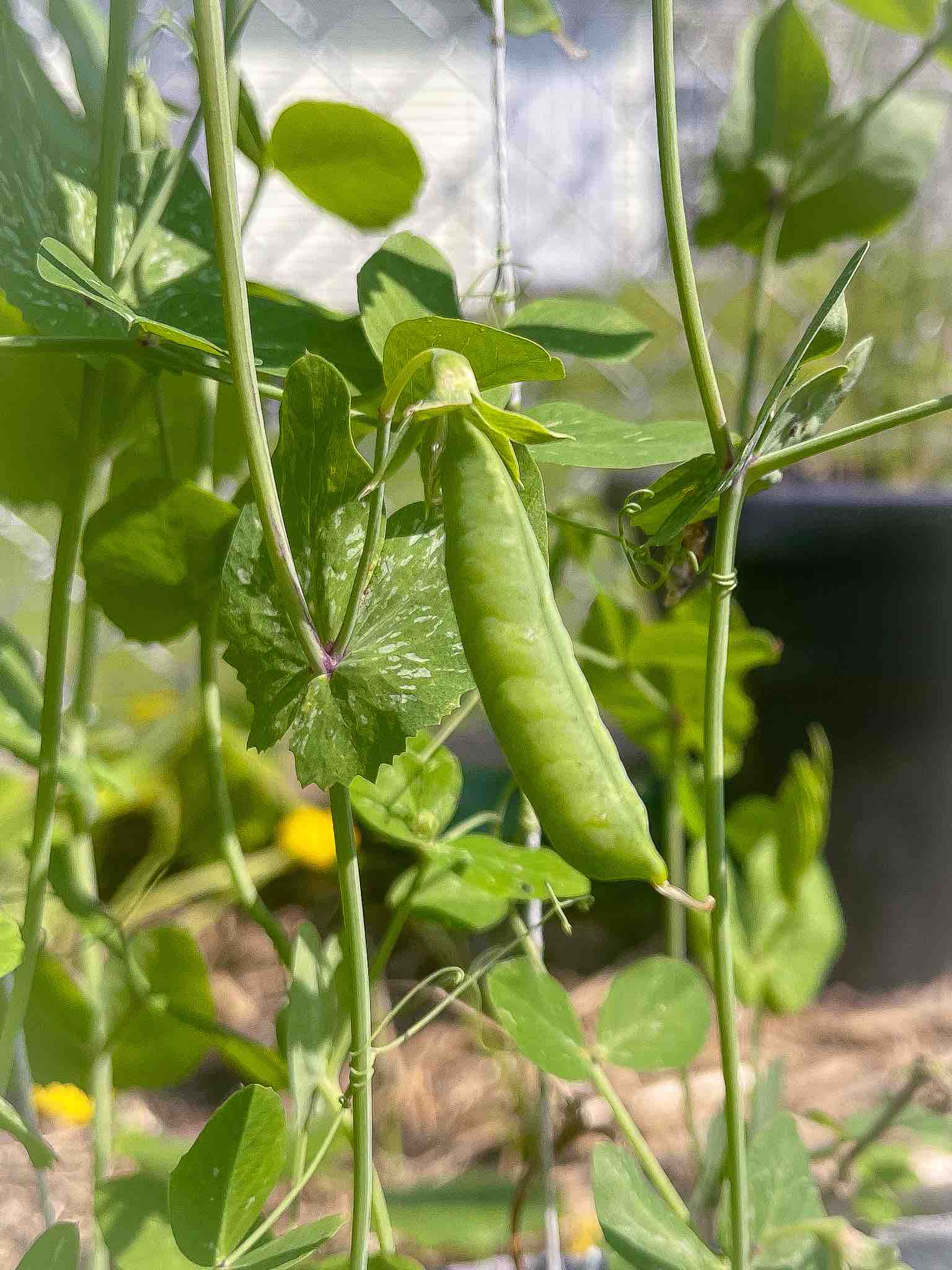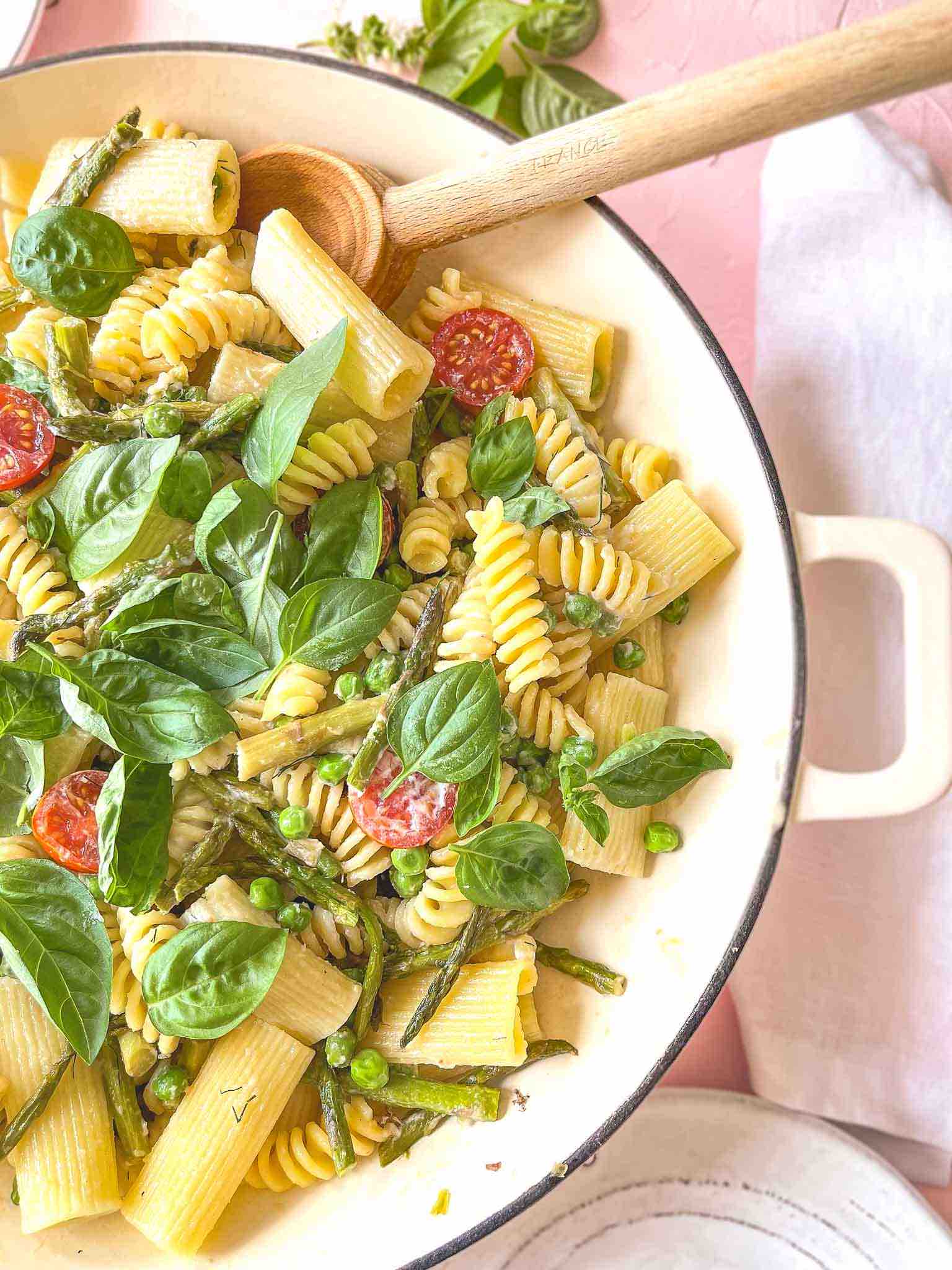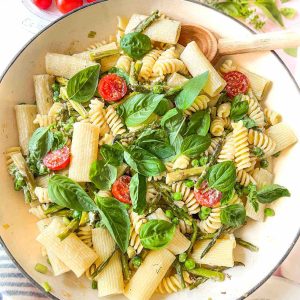HOW TO GROW AND PREPARE SNAP PEAS
When I think of Spring, my mind drifts to snap peas growing in the garden – a symbol of emerging from a prolonged winter and the refreshing feeling of new, sweet, and tender garden peas.
![]()

New, tender, and sweet, I adore snap peas! When you bite into fresh young peas, you are greeted with a delightful burst of vibrant flavors. Young, crisp snap peas taste fresh, sweet, and subtly earthy. Each pea pod holds a cluster of tender, plump peas with satisfying and juicy texture.
Springtime brings with it a sense of renewed energy and anticipation, and there’s nothing quite like the joy of planting snap peas in this season. As the days become warmer and the earth starts to awaken, it’s the perfect time to dig into the soil and sow the seeds of these delicious legumes. Gently placing each pea seed into the ground and covering it with care fills the heart with hope and excitement. Knowing that these tiny seeds will sprout into vibrant green vines bearing crisp and sweet pods is a testament to the incredible miracle of nature. Planting snap peas in Spring is not just about gardening but a celebration of growth, nourishment, and the simple pleasure of connecting with the earth.
You can see my Spring garden layout (including snap peas!), seed choices, and each planting here in the Garden to Table section.

Reasons You’ll Love Growing Snap Peas
Here are a few – all very beautiful and visually appealing!
-
- Delicious and Nutritious Harvest – Snap peas offer a delectable treat straight from your garden. Their sweet, crisp pods are a delight to eat and packed with nutritional value, including fiber, vitamins A and C, and plant-based protein.
- Easy to Grow – Snap peas are relatively easy to grow, making them an excellent choice for beginners or those with limited gardening experience. They are quick to germinate and mature, allowing you to enjoy the fruits of your labor relatively quickly.
- Garden-to-Table Freshness – Growing snap peas allow you to experience the joy of harvesting your own food. There’s nothing quite like picking the pods straight from the vine and savoring their freshness in your favorite dishes or enjoying them as a healthy snack.
- Versatility in the Kitchen – Snap peas offer versatility in the kitchen, allowing you to explore a variety of culinary creations. From stir-fries and salads to pasta dishes and side dishes, these versatile vegetables can add a delightful crunch and vibrant flavor to numerous recipes.
- Seasonal Gardening Pleasure – Planting snap peas in the springtime provides a beautiful opportunity to connect with nature and experience the joys of seasonal gardening. As you witness the plants grow, blossom, and bear pods, you’ll feel a sense of fulfillment and appreciation for the cycle of life.
- Kid-Friendly Gardening – Snap peas can be a fun and engaging way to introduce children to the joys of gardening. The easy-to-handle seeds and quick growth process make it an ideal project for kids to get involved in, teaching them about the plant life cycle and the satisfaction of growing their own food.
- Garden Beauty and Functionality – Snap pea plants can add beauty and functionality to your garden. Their delicate tendrils and bright green foliage can serve as an ornamental addition, providing visual appeal while acting as natural climbers and providing shade to other plants.
- Eco-Friendly Gardening – Growing snap peas allows you to embrace eco-friendly gardening practices. These legumes enrich the soil with nitrogen, reducing the need for synthetic fertilizers. Additionally, they require minimal space, making them an excellent choice for small gardens or container gardening.
Planting snap peas offers a delightful gardening experience with numerous benefits – from their delicious taste and nutritional value to the joy of growing your own food and embracing sustainable practices.

Popular Varieties of Peas
There are many varieties of peas. I like snap peas, but you can experiment!
-
- Snap Peas (Pisum sativum var. macrocarpon) – Snap peas, also called snap-pod peas or edible-podded peas, have crisp and edible pods with fully developed peas inside. They offer a satisfying crunch and are often enjoyed raw, in salads, or lightly cooked in various dishes.
- Sugar Snap Peas (Pisum sativum var. macrocarpon) – Sugar snap peas are a cross between garden peas and snow peas. They have plump pods that are edible and contain sweet and crisp peas inside. Sugar snap peas are delicious eaten raw, lightly steamed, or used in stir-fries and salads.
- Garden Peas (Pisum sativum) – Also known as English peas or shelling peas, garden peas are the classic variety that requires shelling. They have a sweet flavor and are commonly used in recipes like pea soups, stir-fries, and side dishes.
- Snow Peas (Pisum sativum var. saccharatum) – Snow peas have flat, edible pods with very small and underdeveloped peas inside. They are known for their crisp texture and slightly sweet flavor. Snow peas are often used in stir-fries, salads, and Asian dishes.
- Mangetout Peas – Mangetout is a French term that means “eat all.” Mangetout peas, similar to snow peas, are harvested when the pods are flat and the peas are immature. They are used in the same way as snow peas and are known for their tender texture.
- Dwarf Peas – Dwarf pea varieties are compact plants that do not require support. They are ideal for small gardens or container gardening, as they take up less space but still produce an abundant harvest. Dwarf pea varieties come in different types, including garden peas, snow peas, and sugar snap peas.

How to Grow Peas (Snap Peas)
Snap peas are easy and fun to grow. They are ready in about 60 days!
-
- Choose the Right Time – Snap peas are cool-season crops, so it’s best to plant them in early Spring or late summer/early fall when temperatures are cooler. They thrive in temperatures between 55-75°F (13-24°C).
- Select a Suitable Location – Find a location in your garden that receives at least 6 hours of sunlight daily. Snap peas also prefer well-draining soil with a pH of around 6.0-7.5.
- Prepare the Soil – Before planting, remove any weeds and loosen the soil with a garden fork or tiller. Incorporate compost or well-rotted organic matter to improve soil fertility and drainage.
- Sow the Seeds – Plant snap pea seeds directly into the ground, spacing them about 1-2 inches apart and 1-2 inches deep. You can sow them in single or double rows with a trellis or support system.
- Provide Support – Snap peas are climbing plants that require support to grow. Install a trellis, stakes, or a pea fence near the planting area. As the seedlings grow, gently guide them toward the support structure.
- Watering and Maintenance – Keep the soil evenly moist but not waterlogged. Water deeply when necessary, especially during dry spells. Mulching around the plants can help retain soil moisture and suppress weed growth.
- Fertilization – Snap peas generally do not require heavy fertilization if the soil is adequately prepared. However, if needed, you can apply a balanced organic fertilizer before planting or side-dress with compost during the growing season.
- Pest and Disease Control – Monitor your plants regularly for common pests like aphids, slugs, and snails. Use organic pest control methods or insecticidal soap if necessary. Proper spacing and good airflow can help prevent diseases like powdery mildew.
- Harvesting – Snap peas are ready for harvest when the pods have filled out and are still tender. Pick them regularly to encourage more production. Hold the vine with one hand and gently snap off the pod with the other.

By following these steps and providing proper care, you can enjoy a bountiful harvest of delicious snap peas from your garden. Remember to save some seeds for future plantings and consider rotating crops to maintain soil health.

Peas Pests and Bugs
Peas can be susceptible to certain pests and bugs.
-
- Aphids- These small, soft-bodied insects suck the sap from pea plants, causing them to wilt and become stunted. They can also spread diseases.
- Leafminers- These small, moth-like insects lay their eggs on pea leaves. The larvae that hatch from the eggs tunnel through the leaves, leaving behind a distinctive, squiggly trail of damage.
- Thrips- These tiny insects also suck the sap from pea plants, causing them to develop brown or yellow spots. They can also leave behind a sticky residue that attracts ants.
- Cucumber beetles- These striped or spotted beetles feed on pea plants’ leaves, flowers, and pods. They can also spread diseases.
- Pea weevil- This small, brown beetle bores into pea pods, destroying the peas inside.
- Cutworms- These tiny, night-flying caterpillars cut pea seedlings off at the ground.
To control these pests, you can try the following methods.
-
- Physical removal – You can pick off aphids, leafminers, and thrips by hand.
- Trapping – You can use yellow sticky traps to catch cucumber beetles and other flying pests.
- Insecticidal soap – This mild insecticide can be used to kill aphids, thrips, and other soft-bodied pests.
- Neem oil – This natural insecticide can control various pests, including aphids, leafminers, and cucumber beetles.
- Biological control – You can release natural predators like ladybugs and lacewings to help control pests.
Regularly monitoring your snap peas plants is crucial to detecting and addressing pest infestations early. Integrated pest management (IPM) practices, such as practicing good sanitation, using physical barriers, and employing beneficial insects, can help manage pests effectively while minimizing environmental impact.

How to Prepare Snap Peas
Preparing snap peas is quite easy!
-
- Rinse the snap peas under cold water – This will remove any dirt or debris from the peas.
- Snap off the stem end of each pod – This is the hard, woody part of the pod that is not edible.
- Thick pods? – If the pods are thick, you can peel off the string that runs along the length of the pod. This is a thin, fibrous layer that can be tough to eat.
- Cut the snap peas into desired lengths – This is a matter of personal preference. Some people like to cut the peas into short pieces, while others prefer to leave them whole.
- Snap peas can be eaten raw, cooked, or stir-fried – Raw snap peas have a crisp, refreshing taste. Cooked snap peas have a more tender texture and a slightly sweet flavor. Stir-fried snap peas are a delicious and versatile side dish.
Snap peas are best eaten when they are fresh and crisp. If they are not fresh, they may be tough or stringy. If you are going to wait to eat the snap peas, store them in the refrigerator in a sealed container. They will keep for about 3-4 days. When cooking snap peas, it is important to cook them until they are just tender-crisp. Overcooking will make them mushy. Snap peas can be added to salads, stir-fries, soups, and pasta dishes. They are also delicious snacks.

Serving Suggestions for Snap Peas
Snap peas work in so many dishes including pasta, rice, and salads
-
- Vegan Pasta Primavera – Pasta Primavera with spring peas and asparagus is a tried and true American pasta dish. It’s endlessly versatile and wonderfully delicious.
- Grain Bowls – Peas are an wonderful addition to any grain bowl!
- In a salad – One of my all-time favorite salads is my Spring Salad w/Watermelon Radish, Fresh Herbs, and Ricotta-Stuffed Pea Pods. Say no more!

Vegan Pasta Primavera with Spring Peas & Asparagus
Ingredients
- 2 cups pasta (of your choice)
- 1 cup fresh asparagus (I used roasted asparagus)
- 1 1/2 cup fresh snap peas (frozen will do just as well)
- 1 cup fresh halved cherry tomatoes
- 1 tbsp extra virgin olive oil
- 1 clove fresh garlic (diced)
- 1 cup fresh basil
- 1 cup fresh dill-infused cashew cream
Instructions
- Bring a large pot of salted water to a boil. Add pasta and cook for 12 minutes, or until al dente. Drain pasta and set aside.
- In the meantime, pour olive oil into a 12-inch skillet over medium heat, tilting the skillet until it is evenly coated. Stir garlic and shallts and cook until tender.
- Add fresh peas and stir on low to medium heat until tender.
- Add aspargus and stir until tender.
- Add cooked and well-drained pasta
- Add cherry tomato halves and continue to stir for one minute
- Then fold in spoonfuls of dill-infused cashew cream until desired creaminess.
- Salt and pepper to taste.
- Add handful of fresh basil to the top.
- Serve!


0 Comments